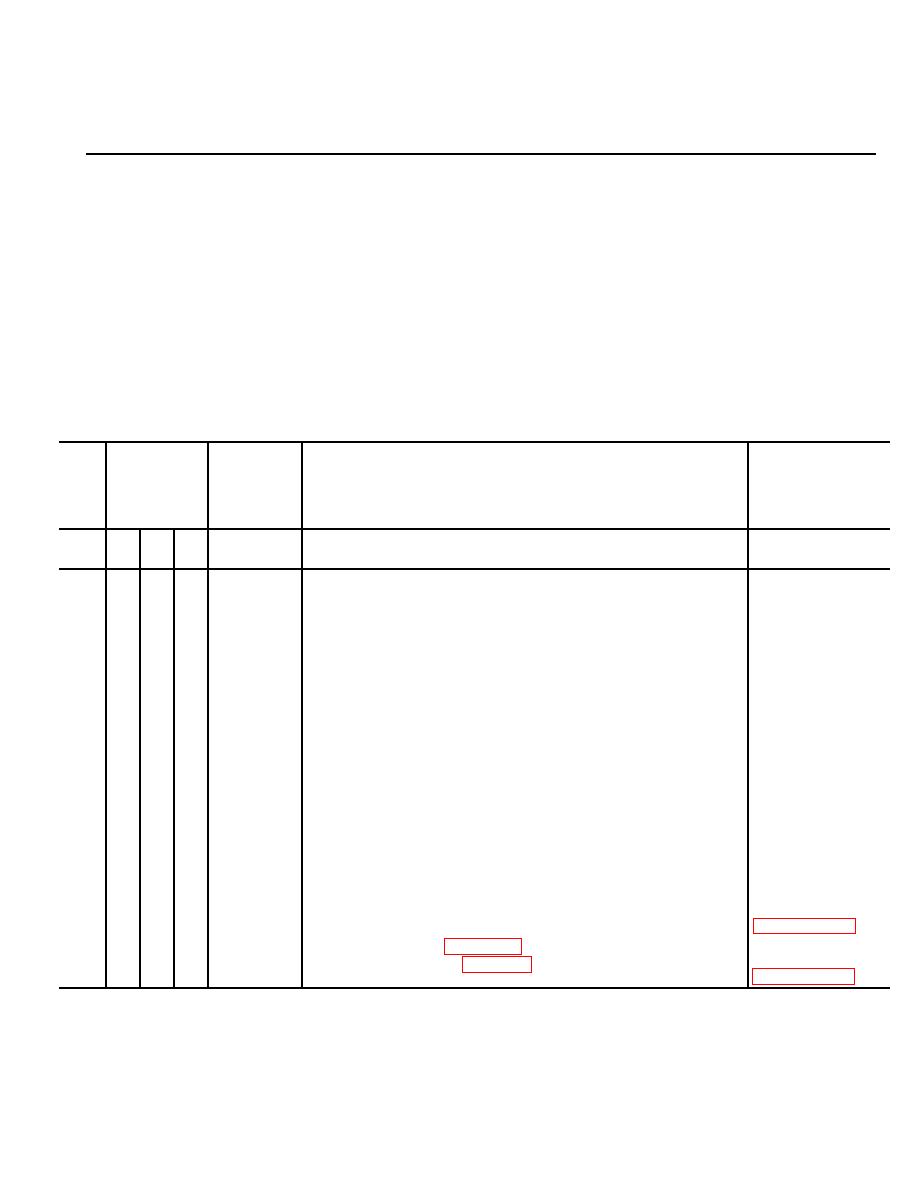 |
|||
|
|
|||
|
Page Title:
Chapter 3. MAINTENANCE INSTRUCTIONS |
|
||
| ||||||||||
|
|  TM 11-5825-270-10
CHAPTER 3
MAINTENANCE INSTRUCTIONS
3-1. Scope of Operator Maintenance
This chapter provides instructions for preventive maintenance and corrective maintenance tasks authorized
at the operator category.
a. Special tools or test equipment are not authorized at the operator category of maintenance.
b. The preventive maintenance checks and services (PMCS) table (3-1) are performed by the operator. If
PMCS indicates the need for troubleshooting and/or repair of the equipment, request assistance from
organizational or higher category maintenance personnel.
c. The monitor receiver does not require any lubrication.
d.
Operators are not authorized to paint the monitor receiver. If painting is required, refer to general
support maintenance personnel.
Table 3-1. Operator's Preventive Maintenance Checks and Services
NOTE
Within designated intervals, these checks are to be performed in the order listed.
D-Daily
W-Weekly
M-Monthly
Item
Interval
Item to be
Equipment will be
No.
Inspected
Procedures
Reported Not
Check and have repaired or Adjusted as required
Ready (Red) if:
D
W
M
NOTE
If equipment is not used daily, PMCS shall still be performed
weekly.
1
Antenna
security of mounting.
b. Inspect antenna cable connector for proper mating with the
coaxial cable connector.
2
Receiver
a. Inspect receiver for secure mounting in its designated
position.
b. Inspect receiver for cleanliness and freedom from grease or
other
c Check to see that front panel knobs are not loose.
d. Check to see that antenna connector at rear of receiver is
properly mated with the antenna cable connector.
e. Check to see that TB1 connections at the rear of the unit are
secure.
If operation is not
NOTE
normal, refer to
In installations where remote alarm provisions of the receiver
are not used, there will be no connections to TB1.
If operation is not
f. Operate receiver (para. 2-4).
normal, refer to
g. Perform alarm test (para. 2-7).
3-2. Operator Troubleshooting
Table 3-2 outlines troubleshooting procedures if equipment malfunctions are detected during preventive
maintenance checks or during normal operation. If a malfunction is not listed or cannot be corrected by the
specified corrective action, request assistance from higher category maintenance personnel.
3-1
|
|
Privacy Statement - Press Release - Copyright Information. - Contact Us |